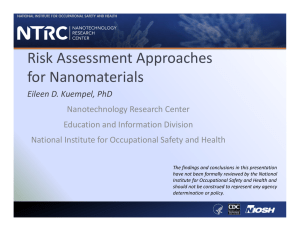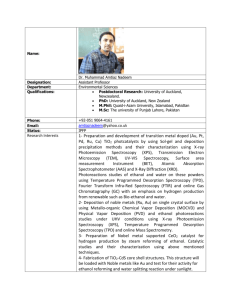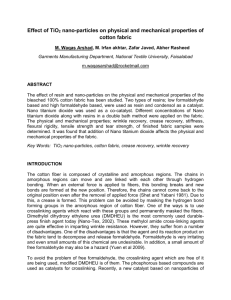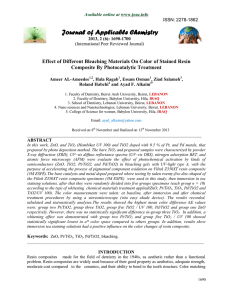Photoinduced Disaggregation of TiO2 Nanoparticles Enables
advertisement
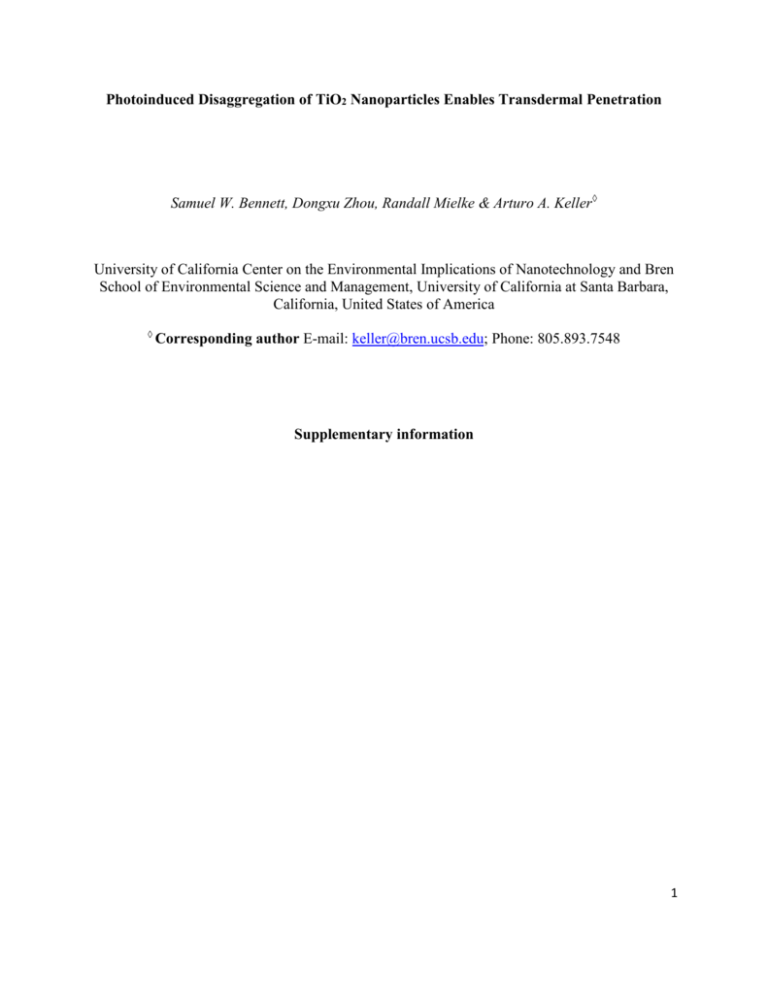
Photoinduced Disaggregation of TiO2 Nanoparticles Enables Transdermal Penetration Samuel W. Bennett, Dongxu Zhou, Randall Mielke & Arturo A. Keller◊ University of California Center on the Environmental Implications of Nanotechnology and Bren School of Environmental Science and Management, University of California at Santa Barbara, California, United States of America ◊ Corresponding author E-mail: keller@bren.ucsb.edu; Phone: 805.893.7548 Supplementary information 1 Particle energy absorption calculation To estimate the amount of light energy absorbed by each particle we first calculate the number of TiO2 molecules per particle. Using a density of 4 g cm-3 the number of molecules is 310,728 TiO2 per 27 nm particle. Next the total number of molecules in the system was calculated. We assumed a monodisperse sample and divided the ratio of total TiO2 molecules in the system and TiO2 molecules per particle by the intensity of light received by the 1 cm2 cuvet, assuming 100 mg L-1 TiO2 absorbs 100% of UVA light. Even if the amount adsorbed is smaller, the energy available is more than sufficient to dislodge a TiO2 nanoparticle from the secondary minimum. DLVO Calculations DLVO theory calculation. Two interparticle interactions are considered in classic DLVO theory, electrostatic repulsion and van der Waals attraction. Assuming low surface charge, spherical particles of equal size, thin electric double layers compared to the particle size, the electrostatic repulsion, FR, is given by (Elimelech et al., 1995), Where ε is the permittivity, r0 is the particle size, ψd is the particle surface potential, and H is the separation distance between two particles. The inverse Debye length, κ, can be obtained by, 2 2(ze)2 N A c / ( kT ) Where ze is the ion charge, NA is Avogadro’s constant, c is ion concentration, and k is Boltzmann’s constant and T is the temperature. Under the assumptions that particles are spherical and of equal size, and the separation is small compared to particle size, the van der Waals attraction force can be calculated by the following equation, 2 𝐹𝐴 = 𝐴𝑟0 12𝐻 2 Where A is the Hamaker constant. Then the total energy is simply the summation of the two interactions. 𝐹𝑇 = 𝐹𝐴 + 𝐹𝑅 Tissue embedding for microscopy. The embedding procedure is as follows: 1. Rinse samples 3 times in NanoPure water 2. Place samples in glass vial and cover with 2% OsO4, for one hour 3. Rinse samples 3 times in NanoPure water 4. Dehydrate samples by covering for 20 min in solvent and then pour the solvent off; the samples are then soaked in 25% ethanol, followed by 50%, ethanol, 75% ethanol, 100% ethanol twice, 50-50% ethanol-acetone, and finally 100% acetone. 5. Following dehydration, the samples are covered in 50% acetone and 50% resin and stored at room temperature for 12 hr. 6. Samples are then placed in TEM block and covered with resin. 7. The TEM block is placed in an oven at 60º C for 24 hr. 8. The resin embedded samples are removed from the block and prepared for ultramicrotomy. 3








